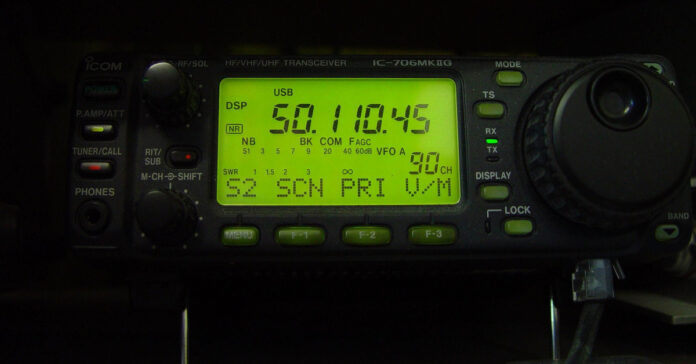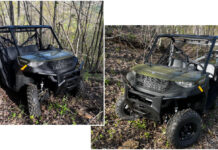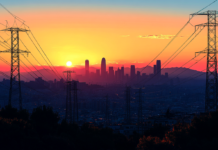Note: This is the third guest article from our Australian contributor Down Under Prepper. Because laws, regulations, and standards vary from country to country, be sure to familiarize yourself with the local licensing requirements, if any, for any radio transmitters you intend to use.
Communications, or Comms, for Preppers
In the Vietnam war, the thing that scared troops the most wasn’t the ‘Cong, but the not knowing what was happening, i.e. Communications.
How does that relate to us, now and facing TEOTWAWKI ?
Depending on the nature of the collapse, the effects on our comms infrastructure can range from an inconvenience to total failure. How addicted are you to your cell phone ? What would you do if it never works again ? If your troops (Family) were not at home, how would you communicate with them and let each other know you are OK and heading home by foot? How would you gather intelligence (Intel) with no access to Twitter, the television news etc? Stay tuned.
Worst Case Scenario
The worst case would be total collapse of all radio/TV/cell phone etc. networks, with the damage so severe, it can never be resurrected. Total and permanent loss of communications, instantly.
What about comms with the people on your farm or community, after the collapse ? Especially those working away from the main house and vulnerable to attack. Yes, you can have armed guards watching over them all the time, but that’s not very efficient.
The very minimum should be a UHF radio for each member of the group, and carried at all times. An agreed channel should be used, not a local trucker channel, highway channel, or repeater channel. (More about repeaters later).
Each vehicle used off farm should have a UHF CB with high gain aerials fitted NOW. Train your people how to use them, and what channel to talk on should be a priority, NOW. Even farm machinery, four-wheelers, quad bikes, etc. should all have permanently installed UHF CB radios.
Range Constraints
Such radios are only good for communications over a distance of several miles, but through the use of repeaters, usually located on high spots, comms can be carried out over distances of several 100km, using small hand held transceivers. Our local UHF repeater has a range of up to 200 km in all directions, greater if you are on a hill as well. It is also totally off grid and solar powered.
In a grid-down situation, make sure everyone in your group knows which channel to use, and how to use the radios installed in these vehicles. You should have a base station installed in the kitchen, or an accessible area in the main house and this would give you comms with everyone as needed. Ranges of several 100 km in every direction are possible through the repeater, so you may be able to reach loved ones in an emergency. The peace of mind that such a setup allows is worth every cent you spend, and it’s not cheap either.
You should also hold drills with neighboring farms and retreats to get your responses worked out, as when the balloon goes up, it’s too late to work it out on the fly. You also should have rechargeable batteries for all portable radios, and after the collapse, no one should step outside without a fully charged radio on their belt. Communications is even more important than defense weapons.
What about Longer Distances?
I believe the humble “good buddy”, 27 megacycle CB radios will make a comeback. There are probably thousands in garages, and can give interstate and even overseas comms in good conditions. Indeed, we used to talk to the states in the 1970’s with such gear, even though such communications were illegal. Now, licenses are unnecessary, at least in Australia, for such consumer gear. Old models, such as the SSB/AM Krako model, located in a purposely built radio room, or even a caravan, and connected to a standard mobile whip aerial, and can communicate interstate if needed. Most modern ones also can operate on 12 volts dc, so solar powering it is easy. 27.125 megs, or channel 14 on USA style sets (Channel 10 on Australian sets), is suggested.
The ultimate in prepper communications is, of course, Ham or Amateur Radio. Hams have access to many frequencies, lots more power, and bigger, better aerials than CB radios. You can also legally design, build, and use homemade/home designed equipment. Licensing tests requirements vary from country to country, as does actual frequencies allowed, but if you get in touch with your local radio club, or the ARRL, they can direct you in the right direction. The actual test is usually multiple choice and covers the basics, they do not expect you to know it all. That’s why they are called amateurs.
Ham Radio
Even if you can’t/don’t want to go the Ham way, every prepper should have at least the CB’s above, plus a decent short wave receiver. Add a good aerial, and the world will literally be at your fingertips. There are 1,000’s of stations broadcasting on short wave, even with the internet. Such stations, especially the major ones, will be invaluable sources of intel, and such intel will likely be a tradable commodity, as people will want/need to know what is happening. Bring the attention of your neighbors to the existence of shortwave, and its advantages in communicating and in intel gathering.
We have a WW2 vintage communications receiver, powered by a WW2 gene-motor, from the shack 12 v battery, giving EMP/CME proof comms. Our bug home bags also have SW comms, with auto scanning radios because when you are hiking home, our senses will be preoccupied with situational awareness . Letting the radio scan automatically for signals frees up the mind and hands.
It isn’t necessary to learn Morse code, at least in Australia, any more, so that’s not an excuse any more for not doing it.
Don’t overlook having a a decent AM broadcast radio in your radio room, say an analogue tuned car radio can give access to local intel within 100 km or so, and interstate at night,
Books to look for. Any ARRL Handbook, along with any RSGB handbooks are worth it, and almost any recent version are all suitable materials to study from. Once again, get in contact with your local Ham club, do it NOW as time is very short. Set up as the go to person for intel in your community.
Power Requirements
There should be at least two power sources for your radio room. The main power feed from your main solar system (You are now totally off grid aren’t you?), and the backup of batteries. A a pinch, a 12 volt heavy duty 100 amp hr car battery will do, but for longer duration’s, especially if you are transmitting at high power, a 1,000 amp hrs battery at 12 volts, with at least 1,000 watts solar, suitable regulator, inverter and lights operating on 12 V dc, will be necessary. Be aware that some LED lights cause radio interference, hence old school bulbs are better, and easier on the eyes as well. Besides, if an EMP takes out all solid state electronics, like leds, the older bulbs will likely survive intact. Leave all the radio aerials disconnected and earthed when not using a radio, both for lightning protection and EMP/CME protection reasons.
It’s also good to have several backup homemade receivers, based on valves (tubes), that also operate on 12 volts dc, and a backup homemade transmitter, also able to operate from 12 volts dc in an emergency.
You should do most of your listening after dark when the ionosphere is at its greatest height and density, providing a nuke has not destroyed it. Subdued lighting will be necessary, as is a way to turn down the panel lights of the radios to keep night vision ready, just in case.
IR security cameras around your radio room to keep an eye on things is also a good idea.
Do you see why I believe comms to be a vital part of prepping?







